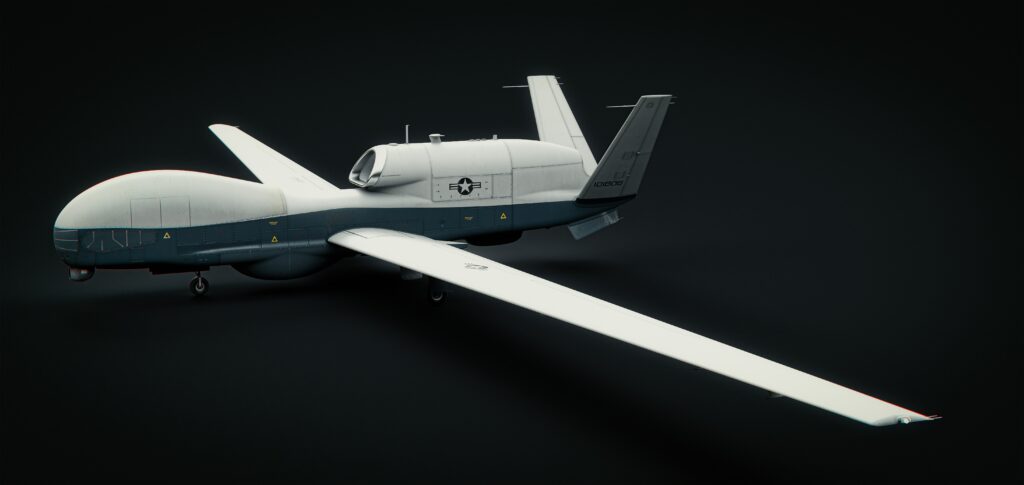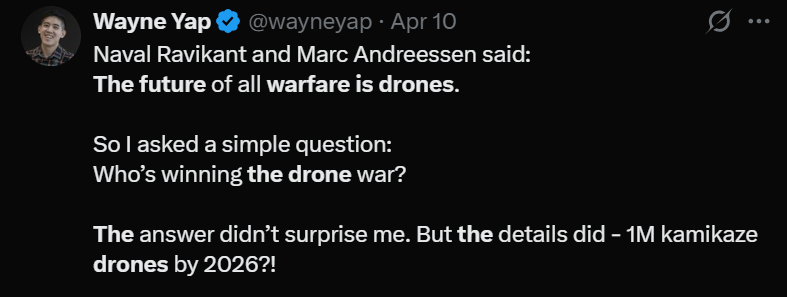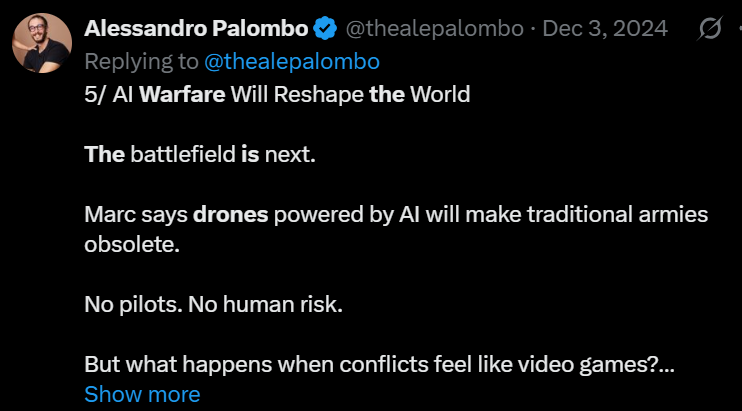
It is very clear that drones have become one of the major equipment in many modern industries. Unmanned aerial vehicles or drones are very versatile for handling many complex tasks. one of them is using them in military.
A brief history on Drone warfare
Using the drone type equipment in wars have a longer history than we think. The first recorded drone warfare was in 19th century where the Austrian army used pilot-less hot air balloons.
By the late 1950s however the US and others found they could use unmanned, remotely piloted aircraft as spy planes. Radio-controlled and fitted with film cameras, the small drones flew over China and North Vietnam gathering imagery intelligence but not risking the lives of pilots, or the diplomatic fallout of US airmen being captured by Communists.
Drones were still only a niche technology during the Cold War. They were unreliable, small yet expensive, and pilots had to be within range of their analogue radio signals, often having to fly their drones while sat in a nearby manned aircraft.
They were overshadowed by globe spanning satellite networks and much sexier, supersonic manned spy planes, such as the U-2 and SR-71 Blackbird, which were much more in tune with the white scarf bravado of Air Force pilots.
The genesis of the drones orbiting today’s battlefields came in three key technological leaps.
First came the work of an Israeli aviation genius who in the 1970s started to develop aircraft with glider-like properties. Incredibly long, thin wings that could hold the plane aloft at altitude for hours on end, more than 24 hours flight.
This endurance is a fundamental reason why today’s armed drones, such as the General Atomics Reaper drone, are so in vogue. The key is keeping the pilots on the ground: the drones are lighter than manned aircraft and they don’t have to land when they get tired, they just swap seats with a fresh crew.
Their ability to loiter proved invaluable in the 1990s, during the escalating conflict in the former Yugoslavia. There was a dearth of good intelligence about Serbian tank and troop movements. US supersonic jets were struggling to spot the Serbian forces in the thick Balkan forests but the drones could stay on station for 24 hours at a time, kept their unblinking eye on their targets.
Combining this loitering with the second crucial advance, the use of transmitters to send the footage straight back to battlefield commanders, is credited with convincing Nato generals they needed to start bombing the Serbs again, so hastening the signing Dayton peace accords.
It is important to know that modern drone building actually started as projects for military. For example, one of the first major drone development projects in the recent history was American MQ-9 Reaper drone. The project was started at 2001 and US military began to conduct flight tests in next year. But the drone’s first official military operation was conducted in 2007.
So, drones were initially designed as military assets in 2000s. Today drones have proved that how much versatile they are in modern warfare. A lot of military expert, world leaders and entrepreneurs have already said that the believe drones have become the number deciding factor in modern warfare.
Look at the Following tweets.



As we can see a lot of prominent figures in tech, politics and military are agreeing on the fact that drones are going to reshaping the future of warfare permanently.
Importance of Drones in modern warfare:
So, let’s talk about the major reasons that have made drones a vital part in military and defense sector. There are several major causes we are going to discuss in this chapter.
Reduce human activities and reduce the risk for human lives:
On the battlefield, drones replace people, not the other way around. This relocation protects human life and lowers risk in hazardous circumstances. Without the constraints of human stamina, drones can sustain optimal performance over a variety of missions with higher persistence. Drones, whether they are aerial, maritime, or ground-based, for instance, are still operated by humans, but they take their position in the monitoring chain and shield them from danger and exposure on the front lines.
Lives can and have been saved by drones. This is especially crucial in asymmetric warfare, when a disparity in manpower availability can result in fewer casualties and a higher long-term return on investment in human capital.
being small:
In the early stages of military drone developments, Drones were actually very large and looked like manned aircrafts. For example, The MQ-9 Reaper drone has a wingspan of 66 feet (20 meters) and a length of 36 feet (11 meters). It weighs 4,900 pounds (2,223 kilograms) empty and has a maximum takeoff weight of 10,500 pounds (4,760 kilograms).
But, with recent technological advancements humans have realized that size doesn’t real matter.
Drones are generally categorized under their size, Drones are generally classified based on distinct characteristics, such as function, size, payload, geographical range, flight endurance, and altitude etc. Drones including MQ-9 reaper is classified under class III. These are larger sized drones for surveillance and strike drones – are useful for gathering information over the lengthy periods of time (i.e., between 12-26 hours, with a General Atomics MQ-9 Reaper now achieving up to 40 hours) and can execute remote strikes. However, without air superiority, they are vulnerable to air defenses, electronic countermeasures, and are expensive to replace.
Class I is the very small-sized FPV drones, which has gained a lot of attention due to ongoing Russian-Ukraine conflict. Both side has used a very large amount of FPV drones attached to explosives. They have proved a significant usefulness for the both sides.
So, it is proven that we don’t need to build larger-sized drones that looks like manned aircrafts.
Reduced costs:
This is another major advantage of using modern drones. Drones have a very large range of costs. A class III drone such as MQ-9 Reaper is costing millions of USD while a class I small FPV drone can be built for less than 1000 USD. This is a significant cost reduce. Every drone has very few essential components regardless of their type. Also it is very easy to buy a pre-made drone from a manufacturer such as DJI and modify the drone into a military drone. A better model from DJI drones can be bought for less than 1000 USD.
rapid and easy mass production:
Reducing cost gives another major advantage of rapid and easy mass production. A small FPV drone can be built within less than24 hours. But for a large scale drone such as Reaper or Large military vehicle it will take at least 6 months or commonly, years. So, imagine the speed for building small-scale military drones during 6 months. Another advantage is that we can produce 100 of thousands of drones for the same amount of money which requires to build just one large military vehicle.
Impact and efficiency:
The ongoing conflicts around the world has shown something special about drones. They can have significant impact regardless of their size. We can see many videos of small FPV drones blowing up large military vehicles such as armored vehicles within seconds. Imagine you can destroy a millions of dollars worth military equipment by using a 1000 Dollar drone.
Multi-Purpose Use of UAV
Overall, drones have been shown to provide lethality at range, low cost, and with economy of effort that can be used in the air, land and sea. The ability to see farther accurately, coupled with cost savings, has made UAVs indispensable for future of drone warfare.
increasing the safety:
Drone operators can provide real-time information without putting themselves at risk. On top of this, that same information also informs commanders where to position their troops to ensure safety. They can be deployed within seconds and some models (e.g.: racing drones) can achieve significant speed. They can have a longer operational time between recharging.
Increasing the flexibility :
Military forces always need to be ready for anything at a moment’s notice. While the military-industrial complex has developed technology that prioritizes this need, drones are the best example. On top of this, drones can even be fully automated. Today, many Military Warfare industries develop drone technology integrated into more military programs worldwide. They provide many benefits and advantages that make them extremely useful for different roles.
The modern drones can have a big impact in many areas of military and defense operations including:
- Reconnaissance: Drones can conduct surveillance missions by hovering over an area for an extended period.
- Command and Control: Drones can relay crucial information on enemy movements, locations, and positions of strategic targets. This information allows commanders to be more efficient and make better decisions when in the field.
- Combat and Combat Support: Unmanned vehicles play a huge role in performing combat and combat support missions. Built-in targeting software allows operators to hit their targets with greater precision and accuracy.
- Target Practice: UAVs can be used for target practice or for training exercises by operators to improve their accuracy. Drones’ built-in targeting software is customizable to detect and respond to targets automatically.
- Logistics: Drones can be used as military-industrial couriers and assist in delivering valuable supplies and equipment. They can also help evacuate injured personnel.
Role of AI in drone warfare:
AI is the hottest topic in this decade and probably in this century as well. AI is spreading through almost every industry at a rapid speed. One of the major fields is drone operations. The development of fully autonomous drones that are integrated with AI is going to play a vital part in future wars. Specially with AI, we can achieve significant results with better accuracy, reduce costs, and have real-time and faster responses, further reducing risks for human lives.
What’s Next:
Since its initial development by the military-industrial complex in Cold War times, drones have come a long way. Unmanned aerial vehicles are increasingly common, seeing more applications outside of combat. In civilian and commercial applications, their functions will only become more sophisticated. Here are some of the things they can already do:
- Fully Autonomous Flights: Surveying and monitoring large areas can be difficult using traditional means. However, drones with pre-programmed flight paths can turn this into a hands-free routine.
- Highly-Detailed 3D Mapping: Built-in AI and integrated software can help in various functions, from search and rescue to 3D mapping. The processed data can even be sent and shared in real-time.
- Geotagging and Thermal Detection: Drones are surprisingly useful in the agriculture industry since they can tag, monitor, and predict plant health.
This article shows the significance of Drones in modern and future warfare. It is more than clear that drones can decide the future of warfare and will play a vital part in it.
